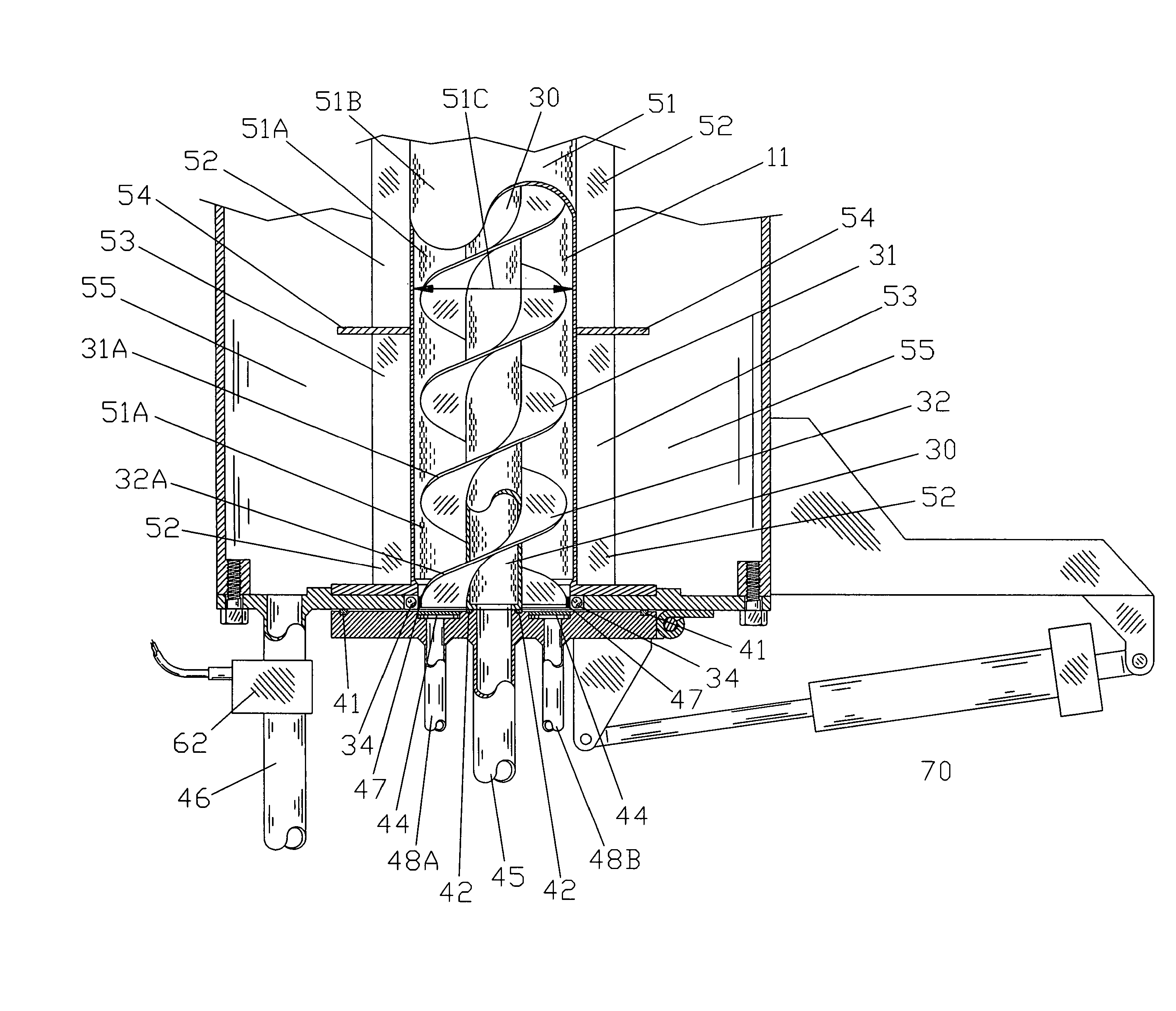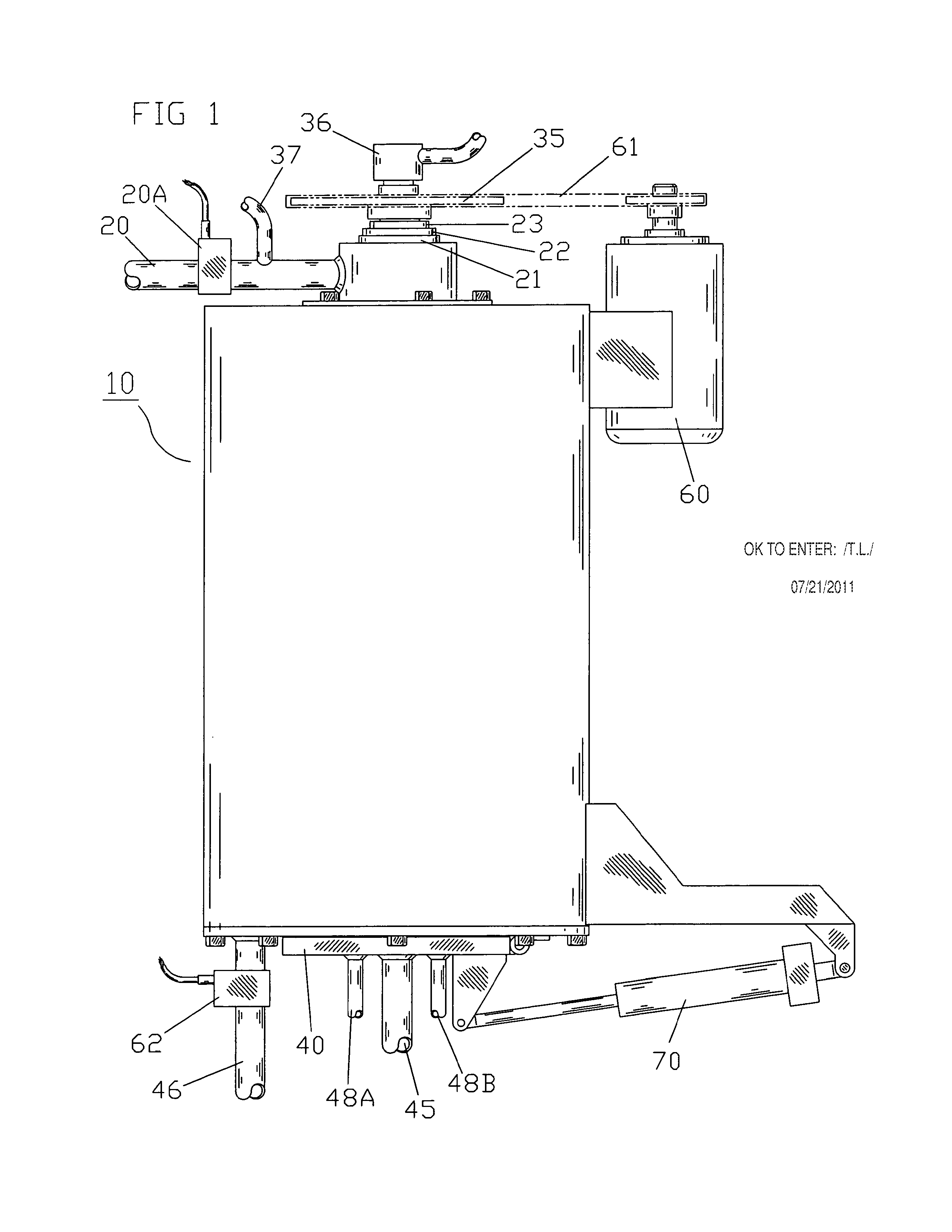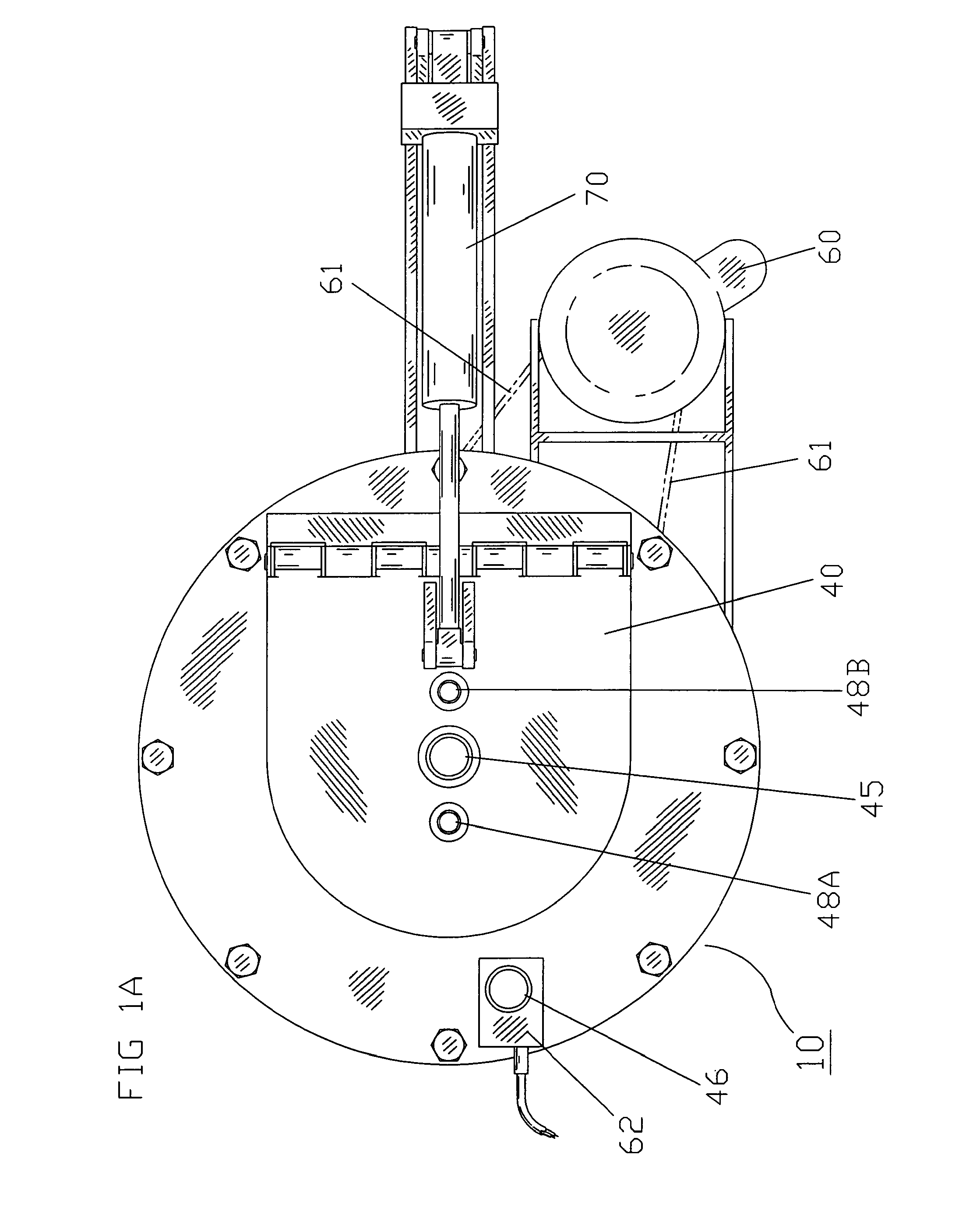Method and apparatus for separating and dewatering slurries
a technology of slurries and methods, applied in the direction of separation processes, sedimentation settling tanks, filtration separation, etc., can solve the problems of unenforceable clean water act of 2002, ineffective prior art dewatering systems, and frightening destruction rate of ground water, and achieve economic effect of manufactur
- Summary
- Abstract
- Description
- Claims
- Application Information
AI Technical Summary
Benefits of technology
Problems solved by technology
Method used
Image
Examples
Embodiment Construction
[0027]In accordance with the present invention, a vertical fiber and solids separation and dewatering system is disclosed. The vertical dewatering apparatus system uses compressed air to displace the moisture from between the particles with minimum compressing of the particles. The compressed air is supplied through an inner screen that is preferably a perforated shaft used to drive flightings to remove the dried cakes. In the broadest context, the apparatus of the present invention consists of components configured and correlated with respect to each other so as to attain the desired objective.
[0028]FIGS. 1-2 illustrate the preferred embodiment of the separating and dewatering system. As best shown in FIG. 1, a vertical dewatering apparatus 10 includes a slurry and inlet port 20 and a bottom hinged door 40 with seals 41 and 42. The door 40 includes a filter screen 44 and a center drain 45 and drains 48A, 48B.
[0029]The apparatus 10 has a centrally disposed perforated shaft 30, the p...
PUM
| Property | Measurement | Unit |
|---|---|---|
| force | aaaaa | aaaaa |
| vertical length | aaaaa | aaaaa |
| area | aaaaa | aaaaa |
Abstract
Description
Claims
Application Information
 Login to View More
Login to View More - R&D
- Intellectual Property
- Life Sciences
- Materials
- Tech Scout
- Unparalleled Data Quality
- Higher Quality Content
- 60% Fewer Hallucinations
Browse by: Latest US Patents, China's latest patents, Technical Efficacy Thesaurus, Application Domain, Technology Topic, Popular Technical Reports.
© 2025 PatSnap. All rights reserved.Legal|Privacy policy|Modern Slavery Act Transparency Statement|Sitemap|About US| Contact US: help@patsnap.com



